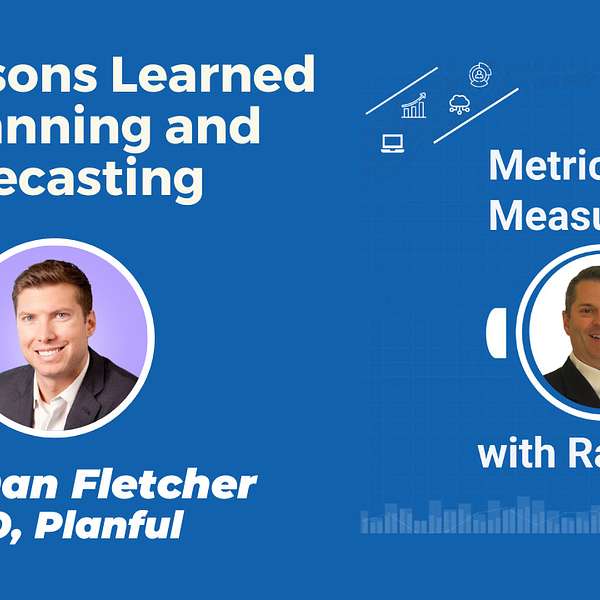
Metrics that Measure Up
Metrics that Measure Up
CFO lessons learned in planning and forecasting - with Dan Fletcher, CFO Planful
Planning in 2020 continues to be chalked full of uncertainty based on the current macroeconomic reality. Assuch, being a finance leader in 2023 is even more challenging, and unpredictable - but developing an operating plan and budget is an important and critical component of the CFO's job.
First, is being "hyper-realistic" is the theme of the year, especially on top-line revenue. Understanding revenue drivers like pipeline generation and conversion is critical to informing the 23' budget and operating plan. Factoring in longer sales cycles closed lost - no decision and buyer hesitancy is part of the art in building the 23' plan.
Second is being "hyper-responsible" in managing costs.
Third is "running multiple scenarios" highlighting the goal of profitable growth, which should always be in style, but even more imperative in 2023. Though Net Income is always interesting, in the B2B SaaS industry revenue growth is still a key driver, while EBITDA and Free Cash Flow are key indicators of profitable growth.
Fourth is "obsessing on the leading indicators" impacting revenue trends.
How have the relationships between CFOs and CROs changed heading into 2023? Dan highlighted he is lucky as both his head of revenue and head of customer success are metrics focused, and they collaborate closely on planning and forecasting - using over 80 metrics to continuously monitor their progress toward their operating plan.
Next, we discussed the challenges of forecasting - especially in today's uncertain environment. Dan shared that hitting a +/- 5% accuracy is probably best in class, while Planful targets 3% - 5% forecast accuracy. Then we discussed the "triangulation methodology" which evolved into using Machine Learning and Artificial Intelligence. However, Dan started by ensuring front-line sales professionals need to see forecast accuracy as a priority.
Dan shared a few tips to improve forecast accuracy. First, sales managers should provide a weekly forecast update as they are the closest to the pipeline, Second, Finance should be monitoring pipeline generation and conversion rates to continuously update the forecast. Third, using AI to capture the signals that impact opportunity conversion rates to provide an automated forecast to be combined with the first and second manual forecast management processes.
What are the top 3-5 performance metrics that Dan is focusing on in 2023? Dan highlighted ARR growth is still a top metric. However, Dan focused on "leading indicators" including outbound pipeline development trends - including the pipeline from SDRs. Other leading indicators Dan tracks include outbound connect rates, conversation rates, opportunity conversion rates, and sales team acceptance rates. Start by looking for "trends" which can serve as very important pipeline trend insights. Next, looking at the opportunity funnel conversion rates in concert with analyzing conversational intelligence insights is very helpful to understanding "early signals" impacting revenue growth.
A strong financial operations capability starts with instrumenting the infrastructure that can quickly surface leading and lagging indicators to inform decision-making. Dan highlighted the importance of technology to compress time from activity to insights to a decision. Being buttoned up on the CRM infrastructure and data are table stakes to fully leverage automated planning, forecasting and reporting.
At what stage of company evolution should a SaaS company start the "instrumentation and automation" journey for planning, forecasting, and metrics reporting. "Complexity" of business operations is a critical factor to determine when to begin the automation journey.
If you are considering how to increase your planning and forecasting accuracy, the conversation with Dan is very insightful and full of great ideas